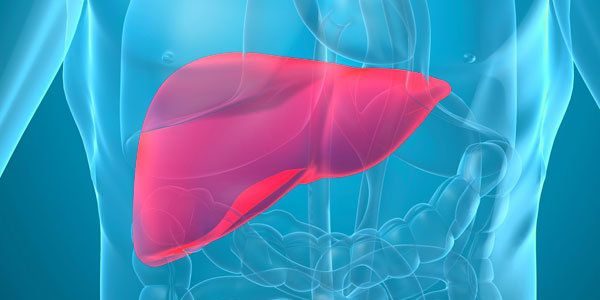Biliary cirrhosis – what is this, symptoms, diagnostics, treatment and prevention of the disease Biliary cirrhosis

Biliary cirrhosis – What is this disease? Biliary cirrhosis is heavy chronically progressive liver disease, due to the gradual replacement of normal liver tissue scar (fibrous) cloth. The prevalence of the disease is about 45 accidents 1 million population. More often biliarnym cirrhosis affects women over the age of 40 years. Frequently this pathology is the family-run nature.
Biliary cirrhosis: the cause of the
The cause of primary biliary cirrhosis reliably not installed, However, his appearance is associated with autoimmune pathology. This is indicated by its association with such autoimmune diseases, as Sjogren's syndrome, autoimmune thyroiditis, renal tubular acidosis, Celiac disease and rheumatoid arthritis. Besides, predisposing factors in the development of biliary cirrhosis may be congenital and acquired anomalies of the biliary tract, vnutripechjonochnye cancerous Neoplasms, bile duct cysts, cholelithiasis, purulent or primary sclerosing cholangitis, the increase in hepatic lymph nodes, as well as jenterobakterial'naja infection. Reasons for the development of secondary biliary cirrhosis lots. It can develop on the background:
- mechanical obstruction of the bile duct (duct stricture, holedoholitiaza, infection of the bile duct, pancreatic cancer and faterova nipple, ascendant purulent cholangitis, cyst of common bile duct, primary sclerosing cholangitis, etc.);
- viral hepatitis;
- postoperative bile-duct contractions;
- alcoholic hepatitis;
- Sepsis;
- medicinal hepatitis;
- atresia of bile ducts;
- Hodgkin's disease;
- Byler family disease;
- Cystic Fibrosis;
- systemic Amyloidosis;
- benign recurrent cholestasis.
Symptoms of biliary cirrhosis
The clinical presentation depends on the etiology and extent of activity of biliary cirrhosis. Common (and often the first) signs of complicated biliary obstructions cirrhosis are:
- asthenic syndrome (weakness, fatigue, reduced efficiency and appetite, sleepiness during the day, dejection);
- itching (may appear as with jaundice simultaneously, and long before it);
- hypotension;
- kaxeksija (weight loss, attrition).
Proper hepatic symptoms appear later (in the later stages). These may be signs of the following syndromes:
- Portal hypertension syndrome (symptom of "head of Medusa" – varicose veins of the anterior abdominal wall, splenomegaly, varicose veins of the rectum, bleeding from esophageal varices, ascites);
- syndrome of hepatic cell failure (Palmar and Plantar hyperemia, Telangiectasia, symptom "Hamster" – increase of the parotid salivary glands, tendency to form krovopodtjokov and bleeding, Telangiectasia and facial vascular network extension, jaundice, lejkonihii, Dupuytren's Contracture, deformities of the fingers and fingernails as "drumsticks" and "hour glass", ksantomy and fat, signs of feminization in men).
Biliary cirrhosis: diagnostics
In the diagnosis of biliary cirrhosis are used the following methods of laboratory and instrumental Diagnostics:
- General clinical blood analysis (perhaps identifying Leukocytosis, anemia, increased erythrocyte sedimentation rate);
- general urine analysis (can be determined by proteinuria, bile pigments and darker urine color);
- biochemical blood analysis (increasing the level of hepatic transferaz, celochnoj phosphatase, GGT, bilirubin, decrease total protein);
- coagulogram (reduction of prothrombin index);
- analysis of hepatitis virus;
- immune status is elevated levels of antibodies to mitohondijam, immunoglobulin m, gladkomyshechnym voloknas, antinuclear antibodies, antibodies to thyroid tissues, increasing the level of rheumatoid factor);
- coprogram, feces analysis on I/g;
- UPPER (identifies the varicose veins of the esophagus);
- Ultrasonography of the abdomen (splenomegaly, the presence of outflow of bile obstruction);
- CT of the Hepatobiliary system;
- Mr percutaneous transhepatic cholangiography;
- Endoscopic Retrograde holangiopakreatografija;
- roasted biopsy (invasive, However, the most informative diagnostic method).
Biliary cirrhosis: classification
On the basis of jetiologicheskomu distinguish between primary and secondary biliary cirrhosis. Gravity currents secrete compensated (And class), subkompensirovannyj (In class) and Decompensated (With class) biliary cirrhosis.
Biliary cirrhosis: patient actions
When you see any symptoms of the disease should consult a specialist for most early detection of Pathology, that will improve the forecast of further treatment.
Biliary cirrhosis: treatment of biliary cirrhosis
When the secondary cirrhosis may etiotropic therapy depending on the reasons for its development (When the viral etiology of cirrhosis-antivirals, When the alcoholic liver damage-waiver of alcohol, When the liver is damaged, the medication-cancel reception of gepatotoksichnogo drug, etc.). Slow fibrosis allows reception of immunosupressorov and choleretic funds (ursosan). Also apply protective preparations, antihistamines, vitamin, Diuretic, enzymatic preparations dezintoksikatsionnaya therapy. With the development of secondary biliary cirrhosis due to mechanical barriers outflow of bile produce surgical procedures (Balloon dilatation, choledochotomy, removing stones, holedohostomija, etc.). In severe cases, liver transplantation.
Biliary cirrhosis: complications
Biliary cirrhosis complicated by hepatic encephalopathy development can, Hepato-renal syndrome, hepatocellular carcinoma, etc.
Biliary cirrhosis: prevention of biliary cirrhosis
Avoiding alcohol, timely Diagnostics and therapy of diseases, leading to the development of biliary cirrhosis, rational nutrition.
